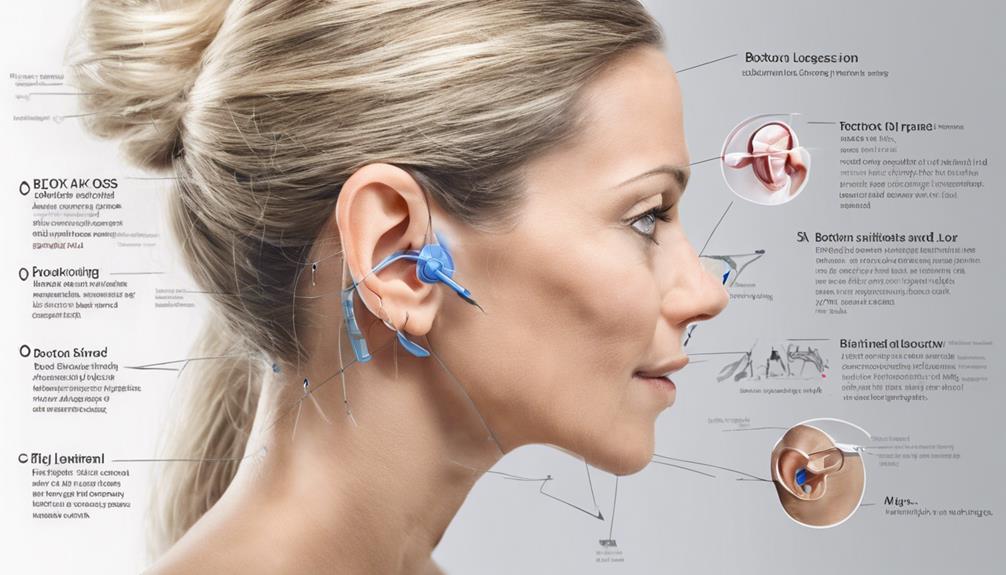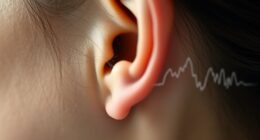Several of us have considered the variety of sizes available for Oticon hearing aid domes and how they can meet different needs. The range of choices, from Open to Double, gives people multiple options to find the perfect fit.
But have you ever considered how these sizes impact the overall performance and comfort of the hearing aids? Let's explore this further to understand the significance of selecting the right dome size for optimal functionality and user experience.
Key Takeaways
- Oticon offers MiniFit and RITE hearing aid dome sizes from 5mm to 12mm.
- Dome types like Single, Double, Power, and Open cater to specific hearing needs.
- Dome selection impacts comfort and performance, crucial for optimal functionality.
- Variety of dome sizes ensures compatibility with Oticon RITE, mini RITE models, and Corda miniFIT slim tubes.
Oticon MiniFit Hearing Aid Dome Sizes
Exploring the Oticon MiniFit Hearing Aid Dome sizes reveals a selection ranging from 5mm (Open only) to 12mm, each tailored to accommodate various ear canal sizes effectively. The Oticon MiniFit Hearing Aid Domes come in sizes 6mm, 8mm, 10mm, and 12mm, with the 5mm size specifically designed for Open Domes with Size 60 speaker units.
These different dome sizes are crucial for ensuring a comfortable fit, as they cater to a wide range of ear canal sizes. The MiniFit Hearing Aid Domes are compatible with various Oticon RITE and mini RITE hearing aids, providing versatility and suitability for different users.
Understanding the significance of dome sizes is essential for selecting the right fit and optimizing the performance of Oticon hearing aids. By offering a range of sizes, Oticon caters to individual needs, promoting comfort and enhancing the overall experience of wearing hearing aids.
Oticon RITE Hearing Aid Dome Options

Available for a wide range of ear canal sizes, the Oticon RITE Hearing Aid Dome options include sizes ranging from 6mm to 12mm, catering to various user needs and preferences. These domes are crucial components that ensure a comfortable fit and optimal performance for Oticon RITE hearing aids. Here are some key points to consider regarding Oticon RITE Hearing Aid Dome options:
- Standard dome sizes of 6mm, 8mm, 10mm, and 12mm are available to accommodate different ear canal sizes.
- Size 5 domes are specifically designed for Open Domes with Size 60 Speakers, offering a specialized solution for certain users.
- Various dome types such as Single, Double, and Power are offered to address specific hearing requirements effectively.
- The domes are compatible with recent Oticon RITE/miniRITE products as well as older models like Agil, Dual, Delta, Epoq, Vigo, Acto, Ino, and Intiga RITE products.
- Choosing the right dome size and type is essential for maximizing comfort, sound quality, and overall satisfaction with Oticon RITE hearing aids.
Oticon MiniFit Dome Size Compatibility
Moving on to the compatibility of Oticon MiniFit domes, these domes come in sizes ranging from 5mm to 12mm, catering to various ear canal sizes for optimal fit and function. The selection of the right dome size is crucial for both comfort and effectiveness of the hearing aid. Different Oticon models are compatible with these MiniFit domes, providing users with a wide range of options to choose from. Ensuring the compatibility of the dome size with the ear canal size is essential for the proper functioning of the hearing aid and overall user satisfaction.
| MiniFit Dome Size | Speaker Size Compatibility | Best Suited For |
|---|---|---|
| 5mm | Size 60 speakers only | Smaller ear canals |
| 6mm | Size 85 speakers | Standard ear canals |
| 8mm | Size 85 speakers | Larger ear canals |
Oticon Dome Sizes and Specifications
In considering the range of Oticon dome sizes and specifications, users can select from various options tailored to specific hearing aid models and ear canal sizes for optimal functionality and comfort.
- Oticon MiniFit Hearing Aid Domes come in sizes: 5mm (open only), 6mm, 8mm, 10mm, and 12mm.
- Size 5 domes are specifically for Open Domes with Size 60 speakers only.
- Different dome types like Single, Open, Double, and Power are available in various sizes to cater to different needs.
- The weight of the MiniFit Domes is 19g, and their dimensions are 20x15x2.5 cm.
- These domes are designed to fit Oticon RITE and mini RITE hearing aids, including models like Alta, Nera, Ria, and OPN, as well as Corda miniFIT slim tubes.
Oticon Hearing Aid Dome Variety
How do the Oticon Hearing Aid Dome variety and sizes cater to different ear canal sizes and preferences for optimal fit and performance?
Oticon offers a range of MiniFit Hearing Aid Domes in sizes from 5mm to 12mm, including Open, Single, Power, and Double options. Size 5 domes are specifically designed in the Open style for Size 60 speaker units.
With dome sizes of 6mm, 8mm, 10mm, and 12mm available, Oticon ensures a fit for various ear canal sizes and individual preferences. These domes are compatible with Oticon RITE, mini RITE models, and Corda miniFIT slim tubes, providing versatility across a wide range of Oticon hearing aid devices.
Selecting the correct dome size and style is crucial to achieving optimal fit, comfort, and performance with Oticon hearing aids, ensuring a tailored experience for each individual's needs.
Frequently Asked Questions
What Sizes Do Hearing Aid Domes Come In?
We come in various sizes to meet individual needs. Our hearing aid domes range from 5mm (open only) to 12mm. It's crucial to select the right size for a comfortable fit and optimal performance.
Remember, the Size 5 dome is specifically for Open Domes with Size 60 speakers. Ensure compatibility with your Oticon RITE and mini RITE hearing aids by choosing the appropriate dome size.
Our domes are designed to fit snugly inside the ear for a seamless experience.
What Are the Difference in Oticon Domes?
When it comes to Oticon domes, the differences lie in the various types and sizes available. These differences cater to individual user needs and preferences, ensuring optimal comfort and performance.
Oticon offers dome types like miniFit Open Dome, Bass Dome Single Vent, Bass Dome Double Vent, and Power Dome to suit different hearing aid models. Additionally, sizes range from 6mm to 12mm, providing options for a personalized fit.
Do Oticon Hearing Aids Come in Different Sizes?
Yes, Oticon hearing aids come in different sizes to accommodate various ear canal dimensions. It's crucial to select the right dome size for optimal performance and comfort.
Different sizes cater to different needs, ensuring a snug and effective fit. Choosing the correct dome size is vital for maximizing the benefits of Oticon hearing aids. Trust us, finding the perfect fit will make a world of difference in your hearing experience.
How Do I Know the Size of My Hearing Aid Dome?
When determining the size of your hearing aid dome, it's essential to measure the widest part of the dome's base using a ruler or caliper.
Additionally, each dome size corresponds to a specific ear canal size for optimal comfort and performance.
Consult with your audiologist for assistance in selecting the correct dome size that suits your Oticon hearing aid model.
Proper sizing ensures a secure fit and enhances the functionality of your hearing aids.
Conclusion
In conclusion, the Oticon MiniFit Hearing Aid Domes offer a variety of sizes to suit different user needs, including Open, Single, Power, and Double options.
It's important to regularly replace and clean the domes for optimal performance. Did you know that studies have shown that regular dome changes can improve hearing aid performance by up to 30%?
Keeping up with dome maintenance can make a significant impact on your hearing experience.









